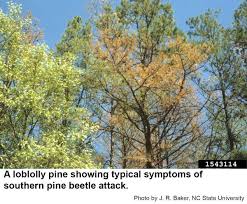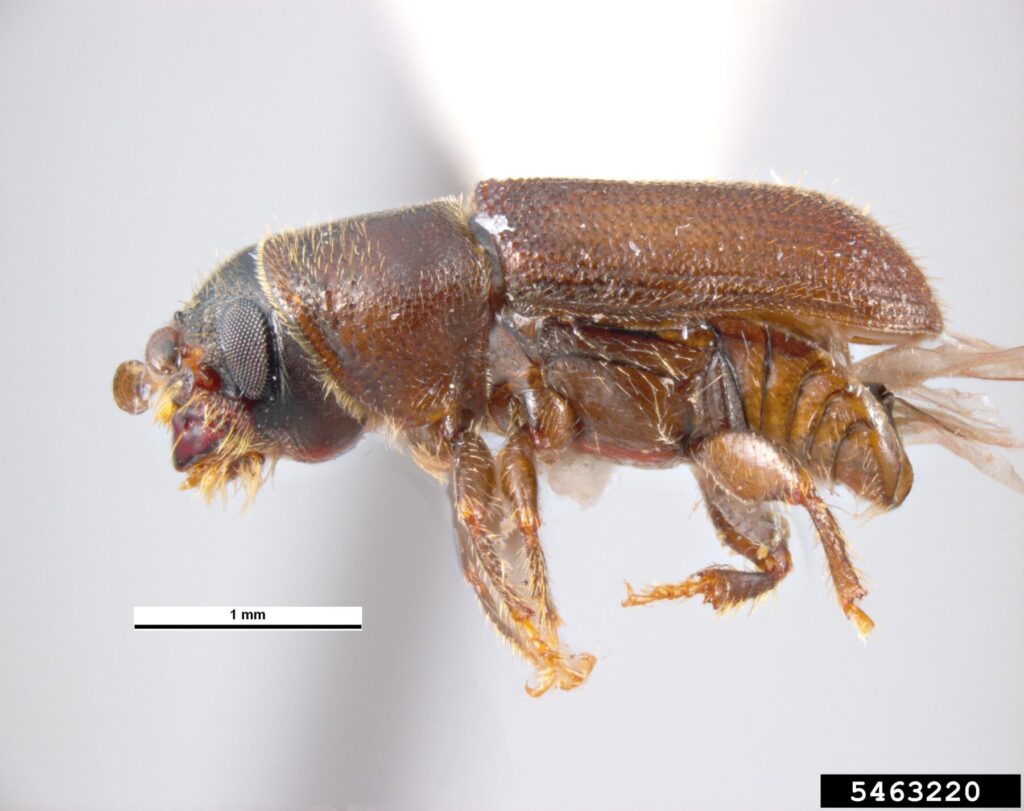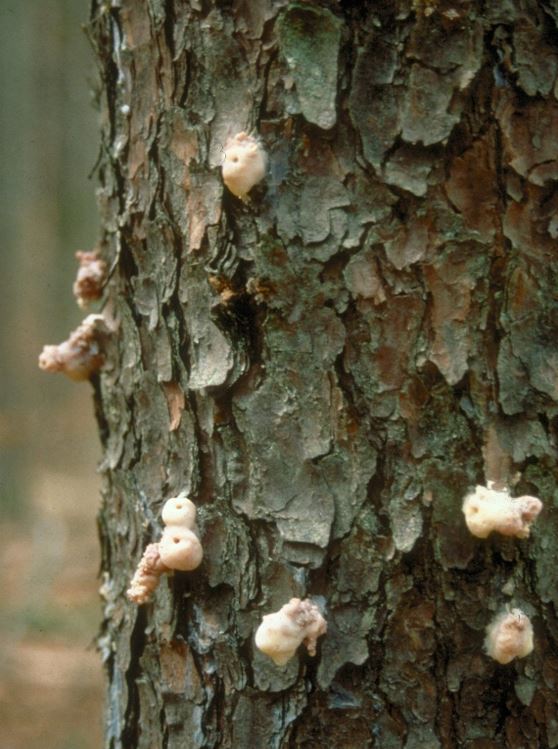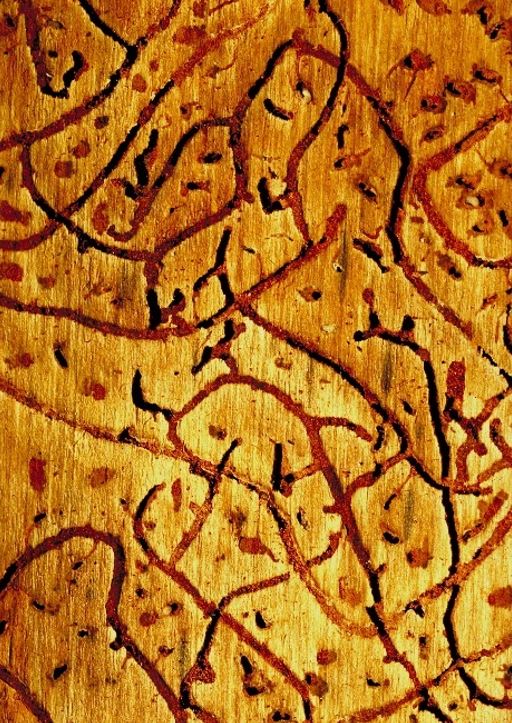If you have pine trees on your property, one of the biggest threats to their health could be lurking just beneath the Southern Pine Beetle (SPB). Though only about the size of a grain of rice, this destructive insect can kill entire stands of trees in a matter of weeks if left unchecked. SBP are having a good year, which is not good news for pine trees in Paulding County. In 2023, the Georgia Forestry Commission (GFC) documented 273 SPB spots in Georgia, which was a surprising increase from recent years, and then in 2024 there were over 1600 SPB spots. For 2025 the Georgia Forestry Commission predictions for SBP outbreaks across the state will follow similar trends as 2024. They rank Paulding County in the top two counties in the state for high probability of SPB spots.

How do I know if my pine trees have southern pine beetles?
The beetles themselves are rarely seen, as they are smaller than a grain of rice.

You may notice fresh green needles on the ground or yellowing needles in the canopy of infested trees. Pitch tubes may appear on the stem. They are dime-sized and white to yellow in color and look like popped popcorn in color and shape. Drought stressed trees may not produce pitch tubes. Healthy pine trees may appear to decline very quickly.

If bark is easily removed from dead trees, SPB galleries are curved or S-shaped and are normally packed with brown frass and boring dust produced by the beetles.

What do I do if I have southern pine beetle infested trees?
The GFC recommends that you cut and remove trees that are dying as the surest way to get rid of the pine beetles. You can chip them on site, but you should apply mulch only to areas that do not have pine trees. You should also monitor living pine trees nearby over the next several months to see if you notice signs of infestation developing.
There are no effective chemical pesticides to treat SPB. Once the beetles have bored into the tree, they are well protected and they inject a fungus into the stem. However, if you remove affected trees quickly, you interrupt the lifecycle of the beetle and can stop the continued spread of SPB.
SPB are a native insect that has lived as part of our southern pine forests for time immemorial. No pine trees are immune to these pests, but their populations ebb and flow based on weather, drought, and other factors, so many pine trees live their lifetime without being infested. Some healthy pine trees may be able to fight off an attack on their own. You can do things that help your trees to be less susceptible to SPB infestation. Pine trees that are stressed by injury, drought, or disease are more likely to be infested. Be sure to mulch around pine trees in the landscape to protect the roots, stem, and bark from lawn mowers and weed eaters. Creating mulched islands is useful if you have a grouping of trees to protect and the pine trees themselves shed needles that help to keep the area mulched over time. Providing irrigation in times of prolonged drought may also reduce SPB pressure on trees in the landscape.
As an Agriculture Agent, Forester, and Arborist, I have been a victim of SPB infestation in my own yard. Fifteen years ago, in my ½ acre yard I had to remove thirty-seven affected trees of many sizes and ages. I worked with a tree removal company that had a certified arborist on staff to oversee the job to make sure that remaining trees were not injured during the removal process. Initially, my yard looked a little thinner, but despite the removal of those trees, remaining pine trees did well and within a year, you could hardly tell that we had removed any trees. I was able to stop the spread of SPB and have not had another issue.
Trees affected by SPB do not have value as timber and you will need to pay for a tree service to remove them. I am often asked if there is anyone who can do it cheaply, but as with other jobs around your home, you get what you pay for. When choosing a tree service, you should ask questions and get references from other clients. Are they properly insured? Are their staff trained in the best practices for safety? Can they provide references for other homeowners they have provided tree removal? A professional company will not be surprised by these questions and will be prepared to show you documentation of their insurance and give you references for their work.
You can seek the assistance of a professional certified arborist to help you identify and deal with SPB infestations. In Georgia, you can find a listing of companies that have professional arborists on staff at the Georgia Arborist Association website directory:
https://georgiaarborist.org/GAAMembers/